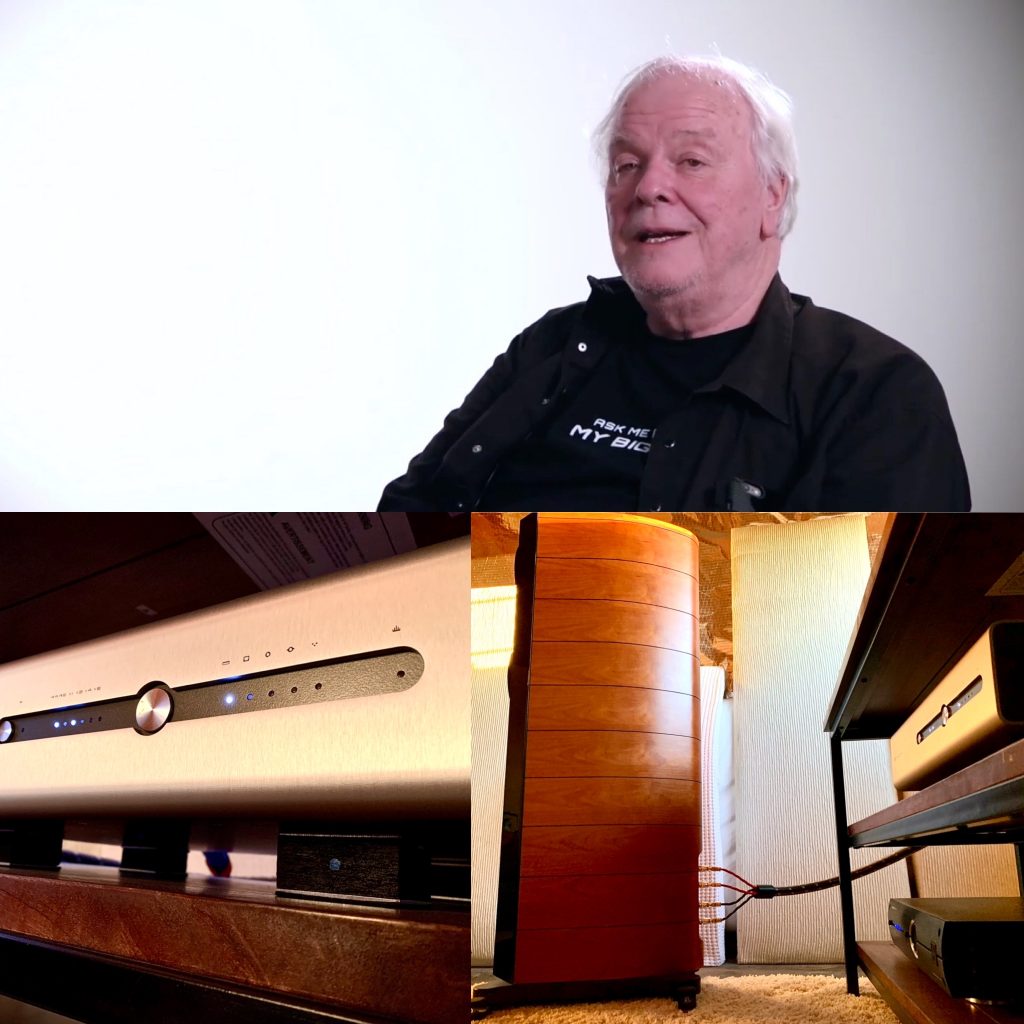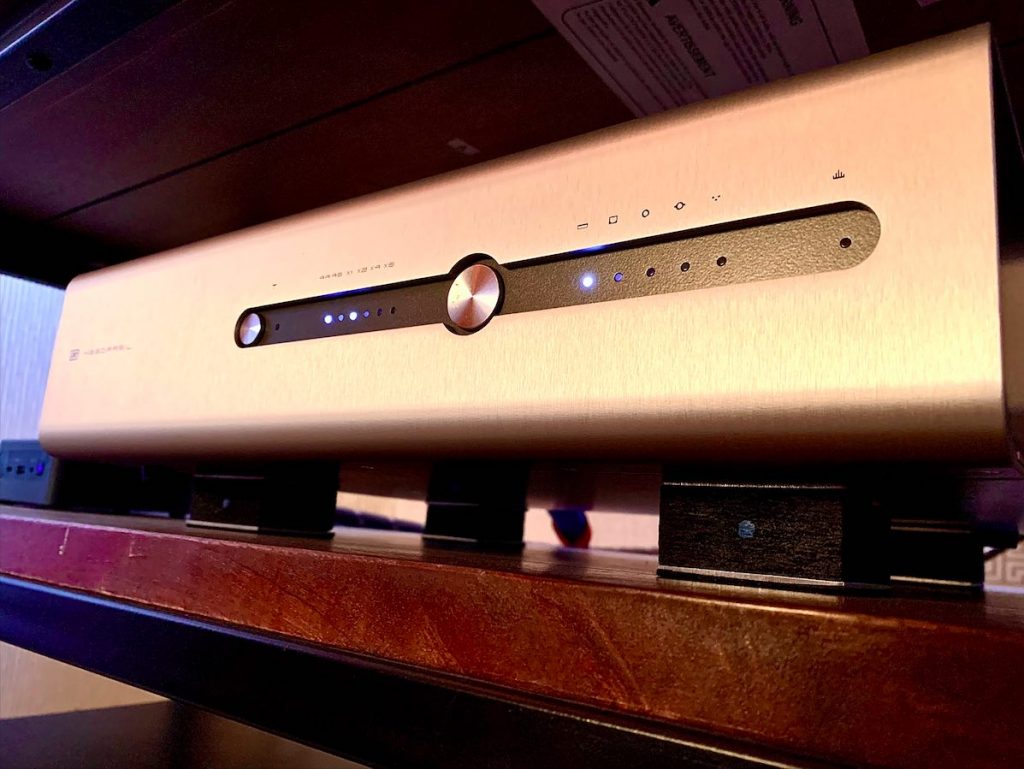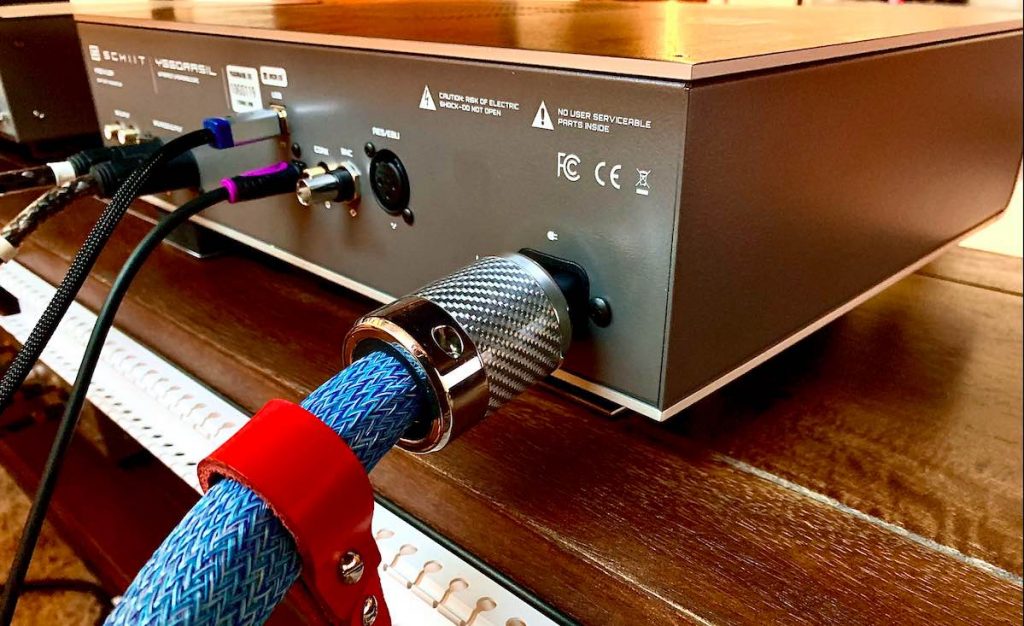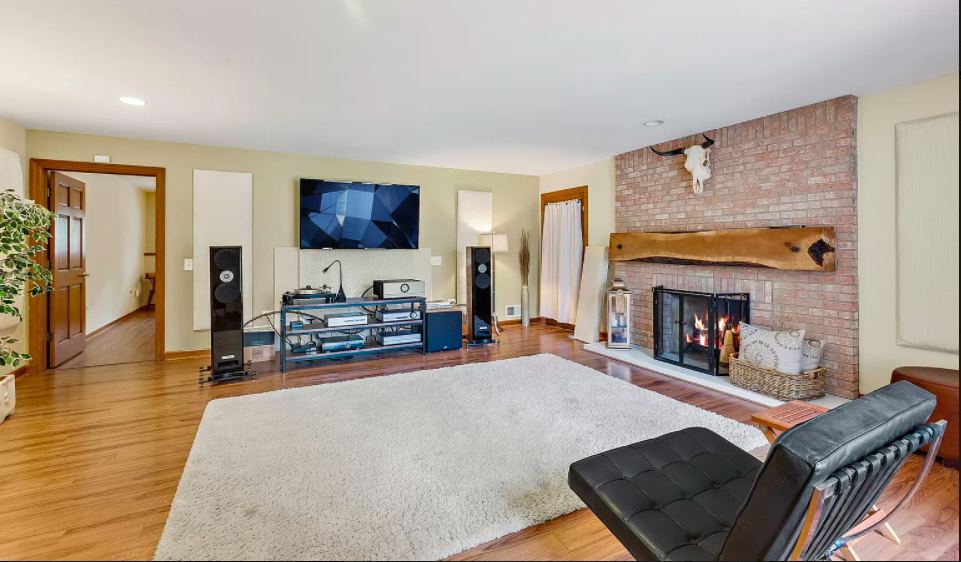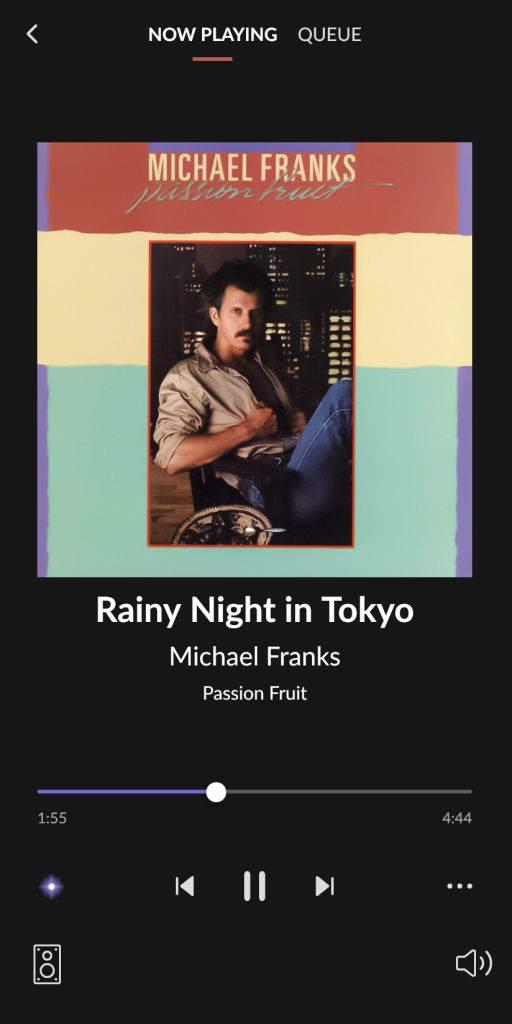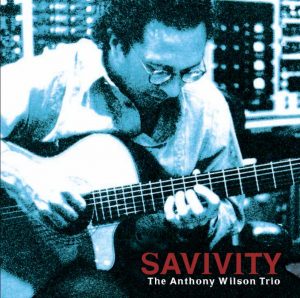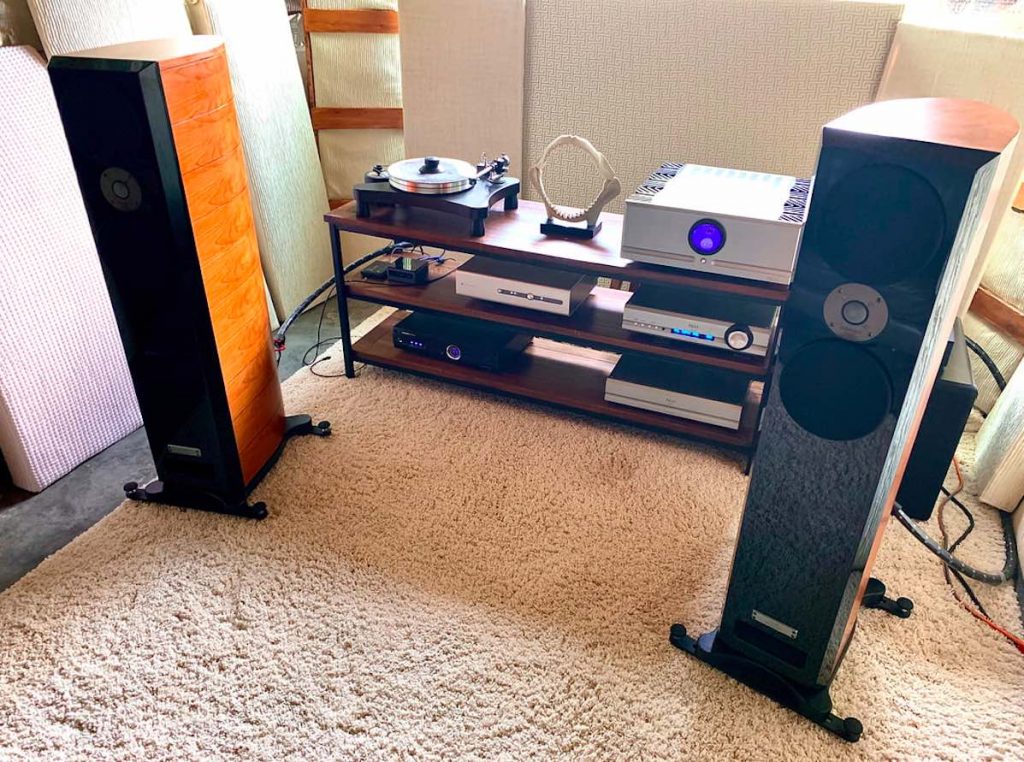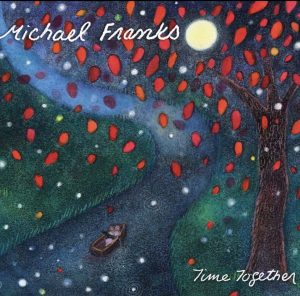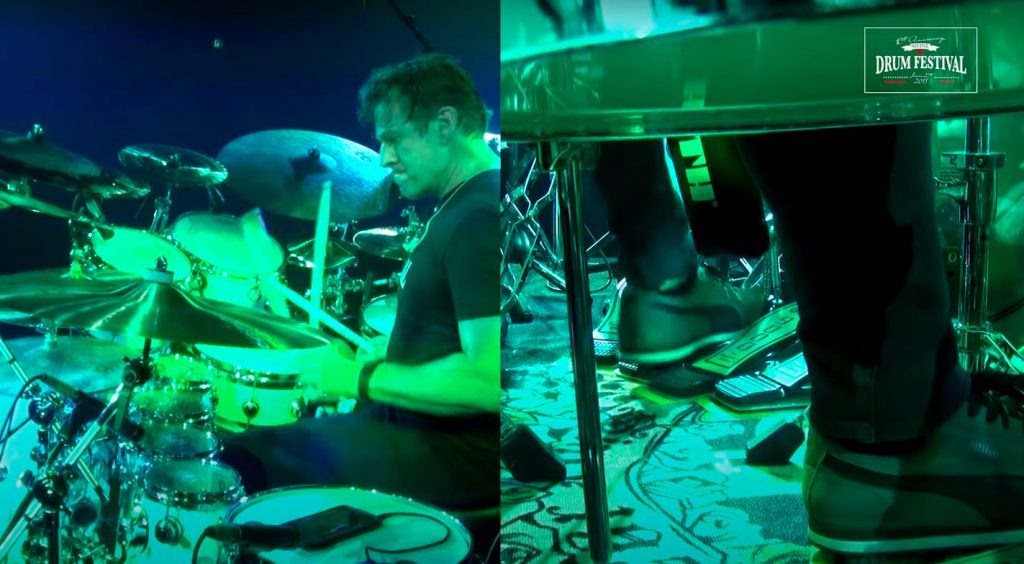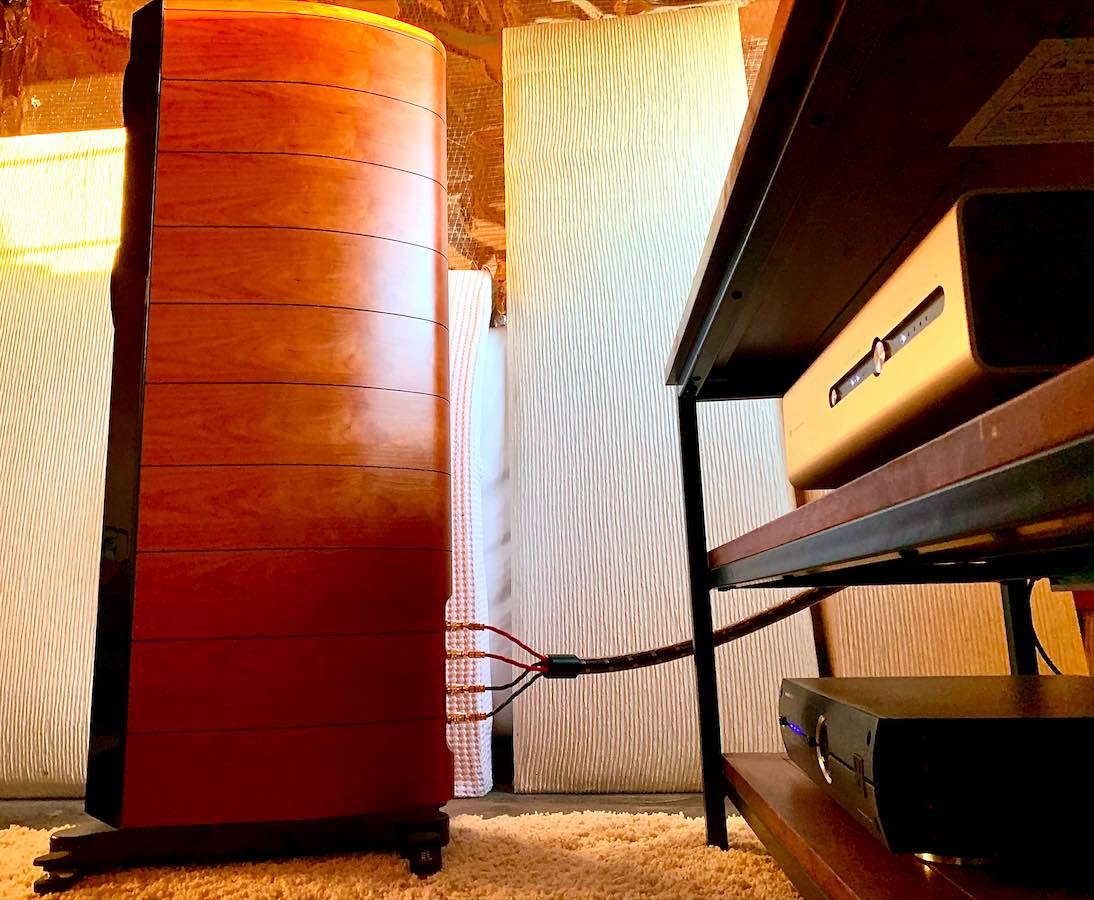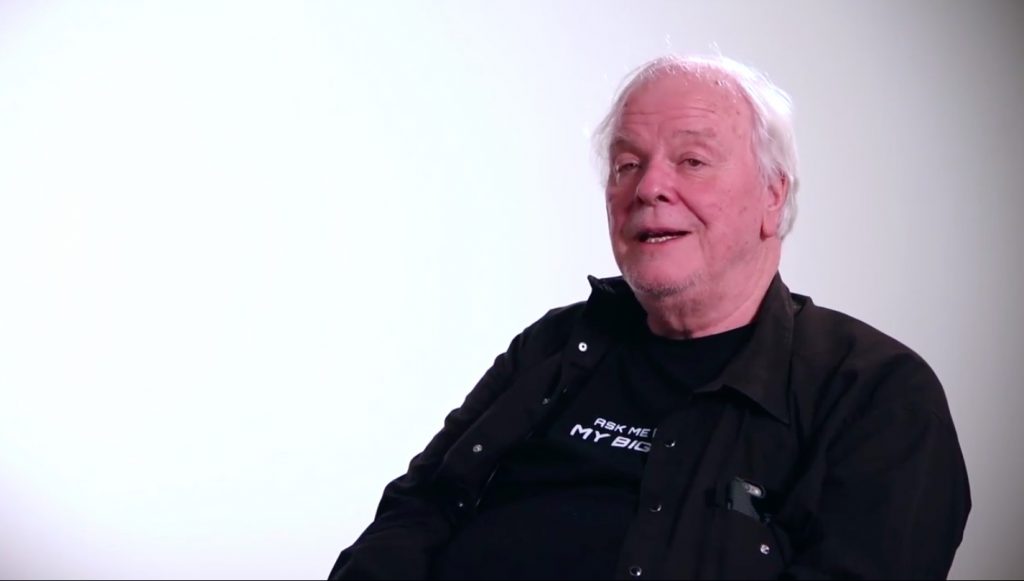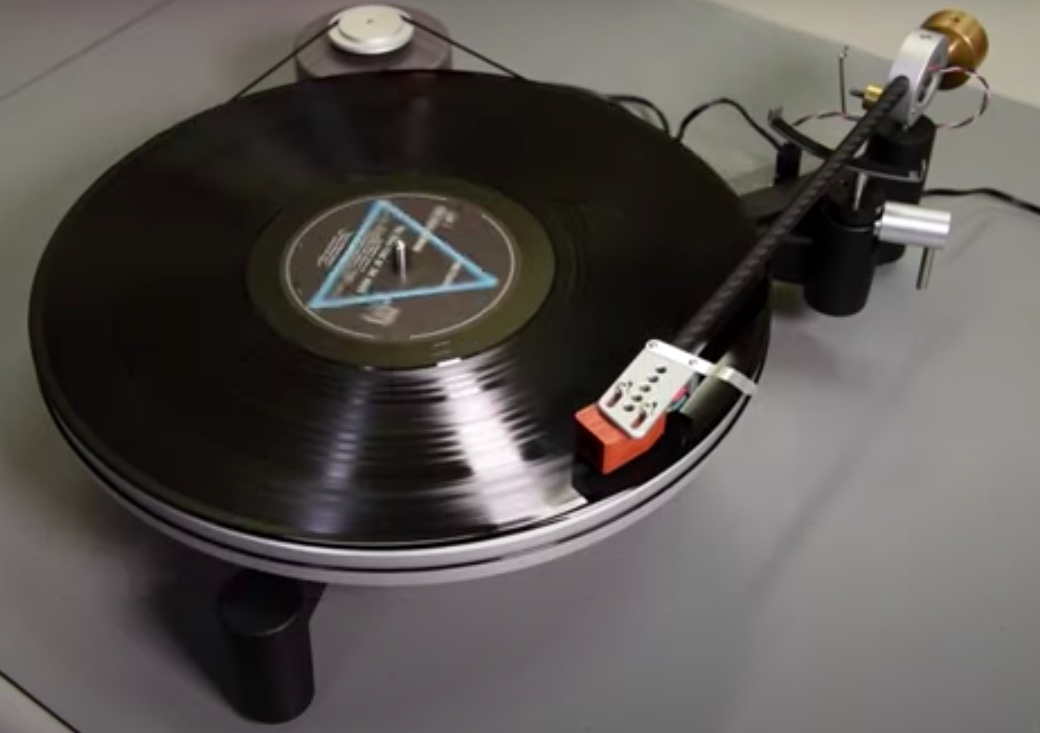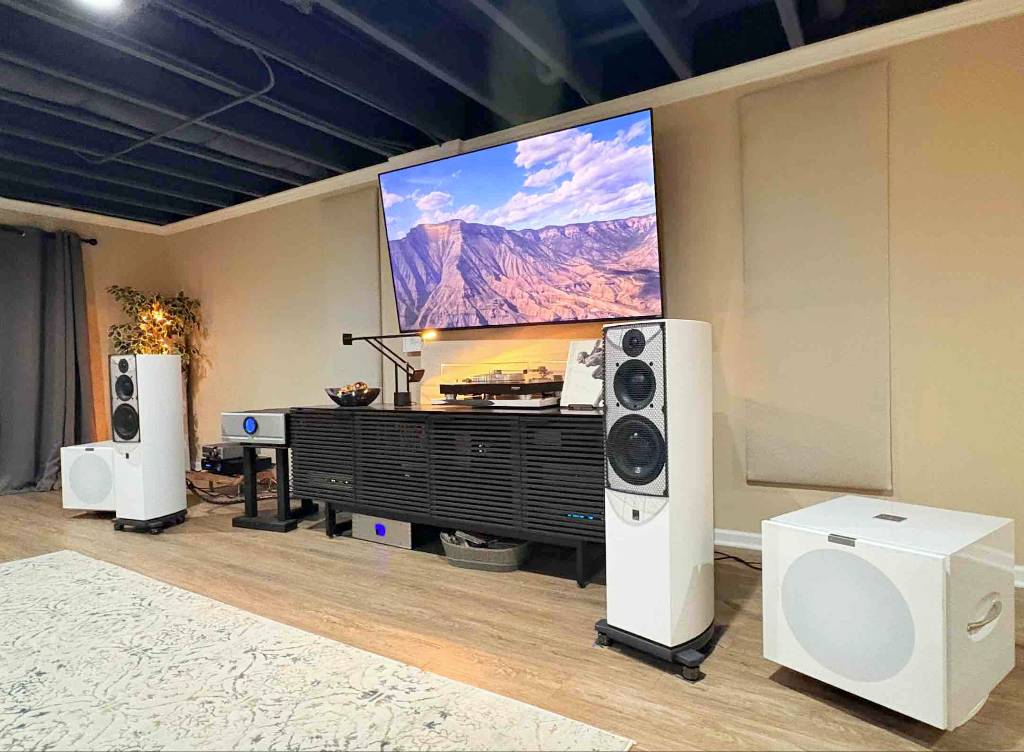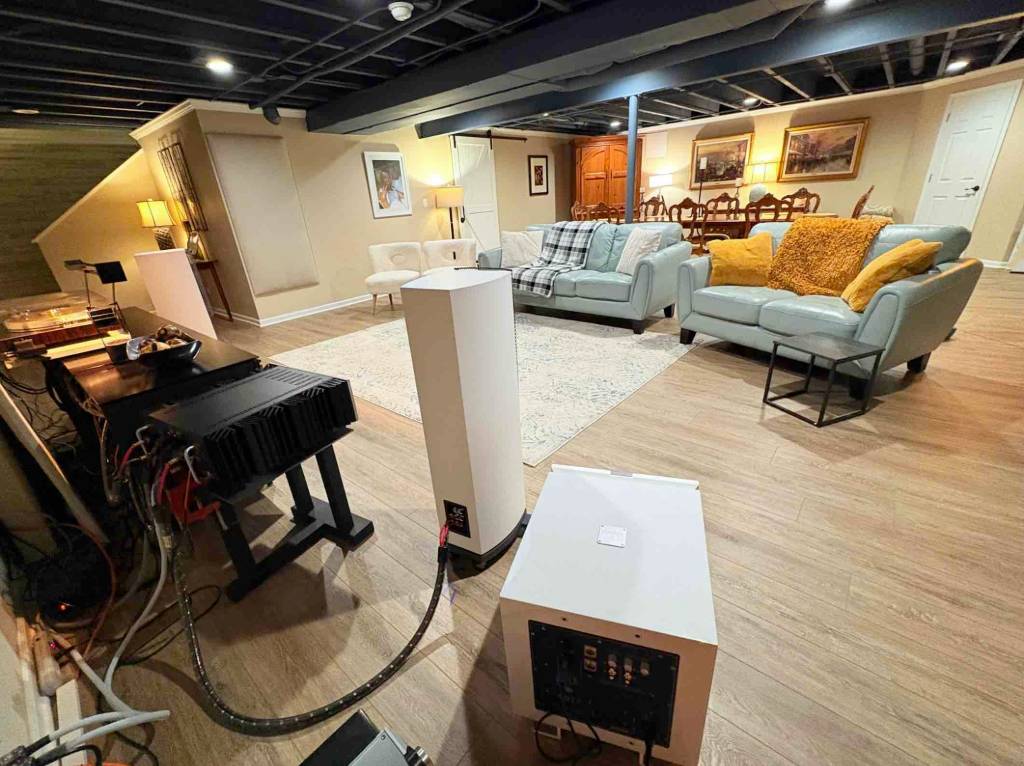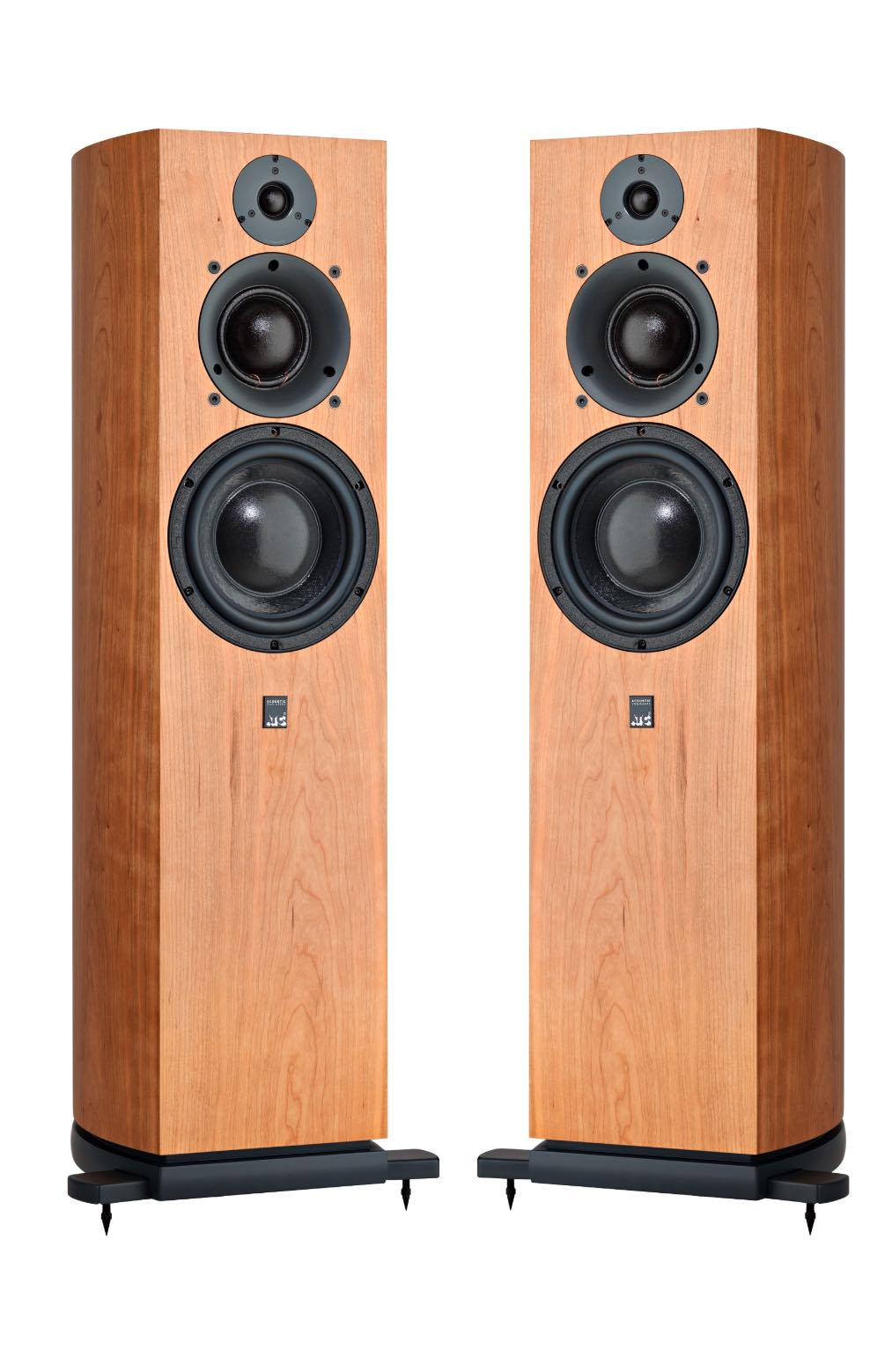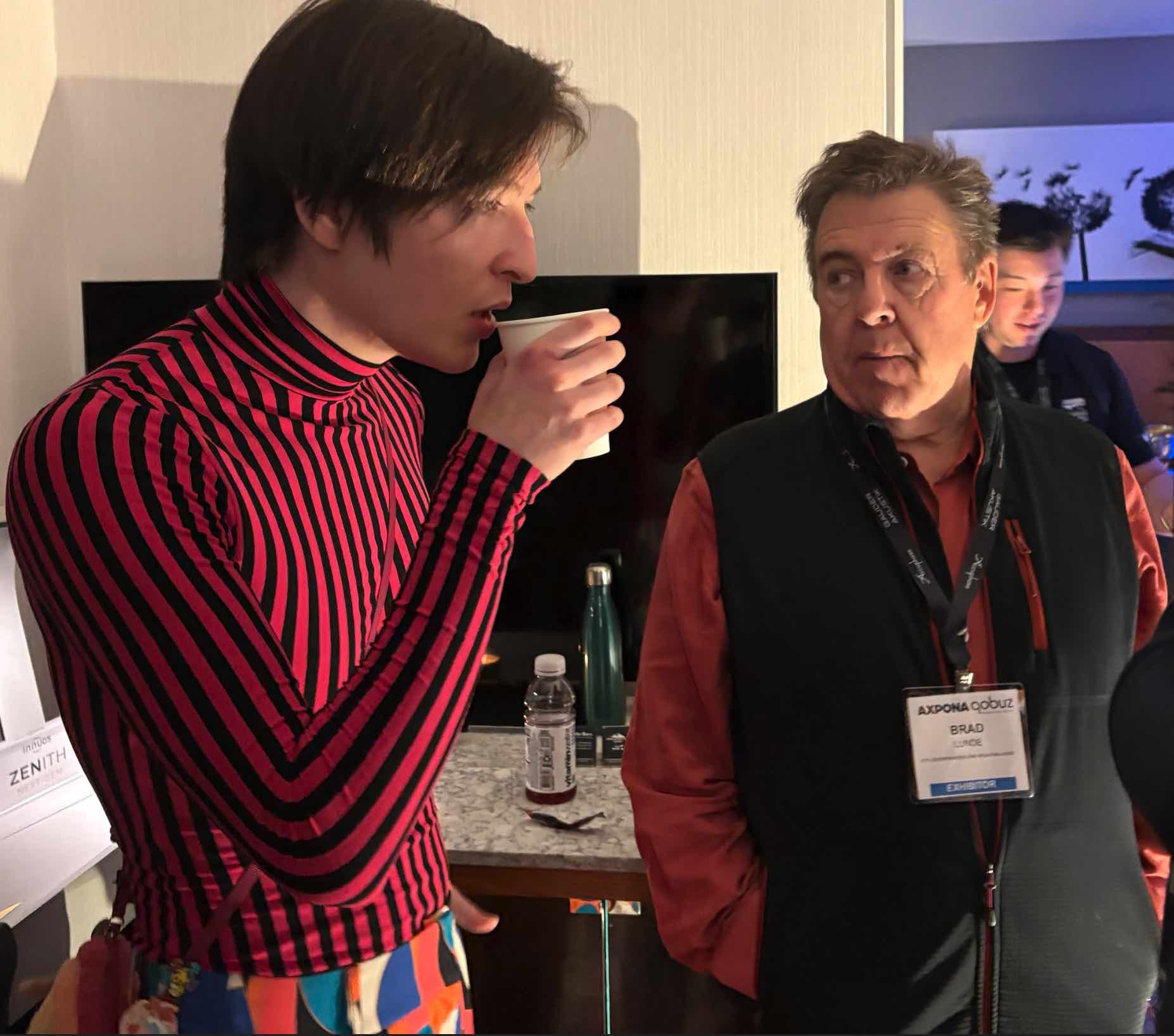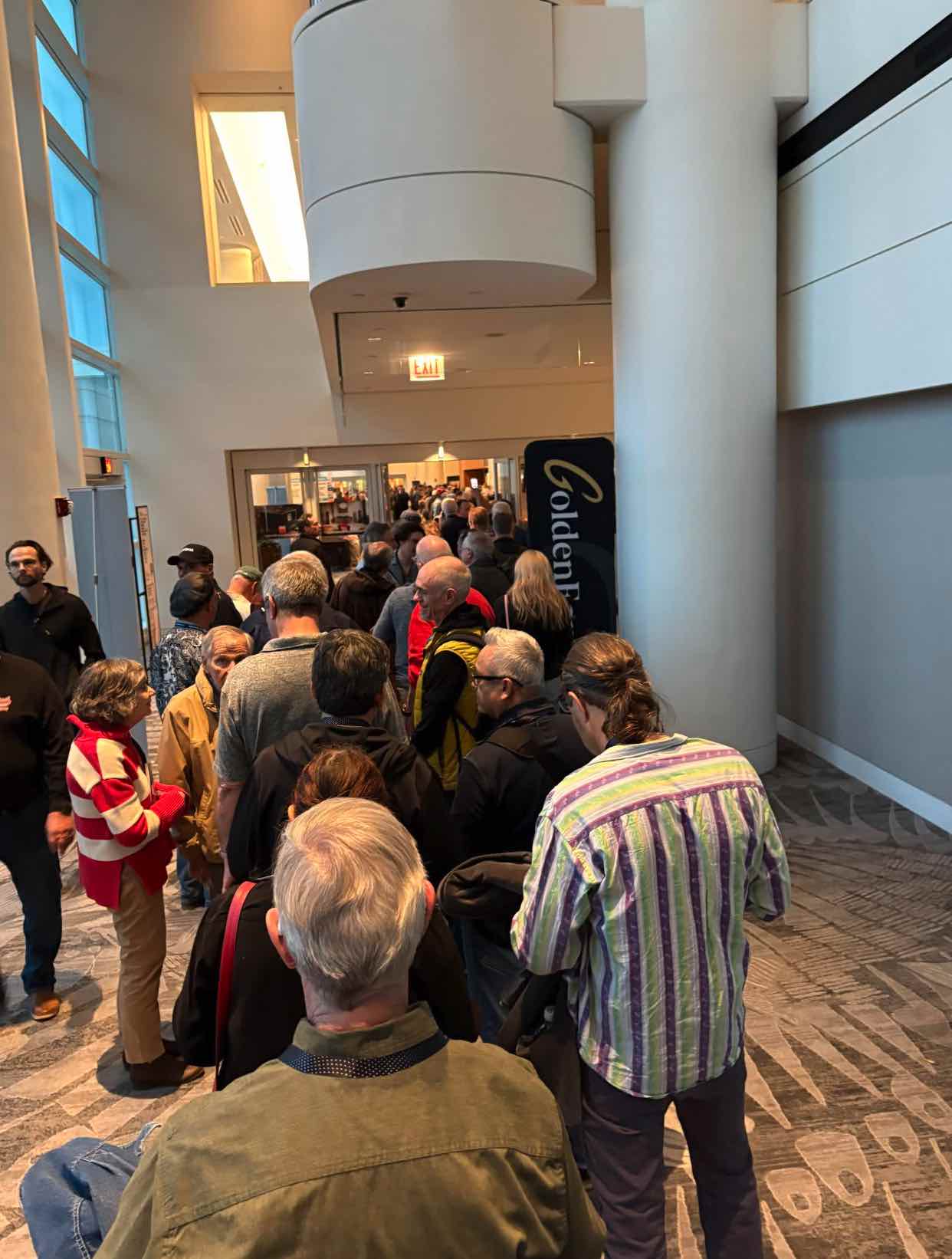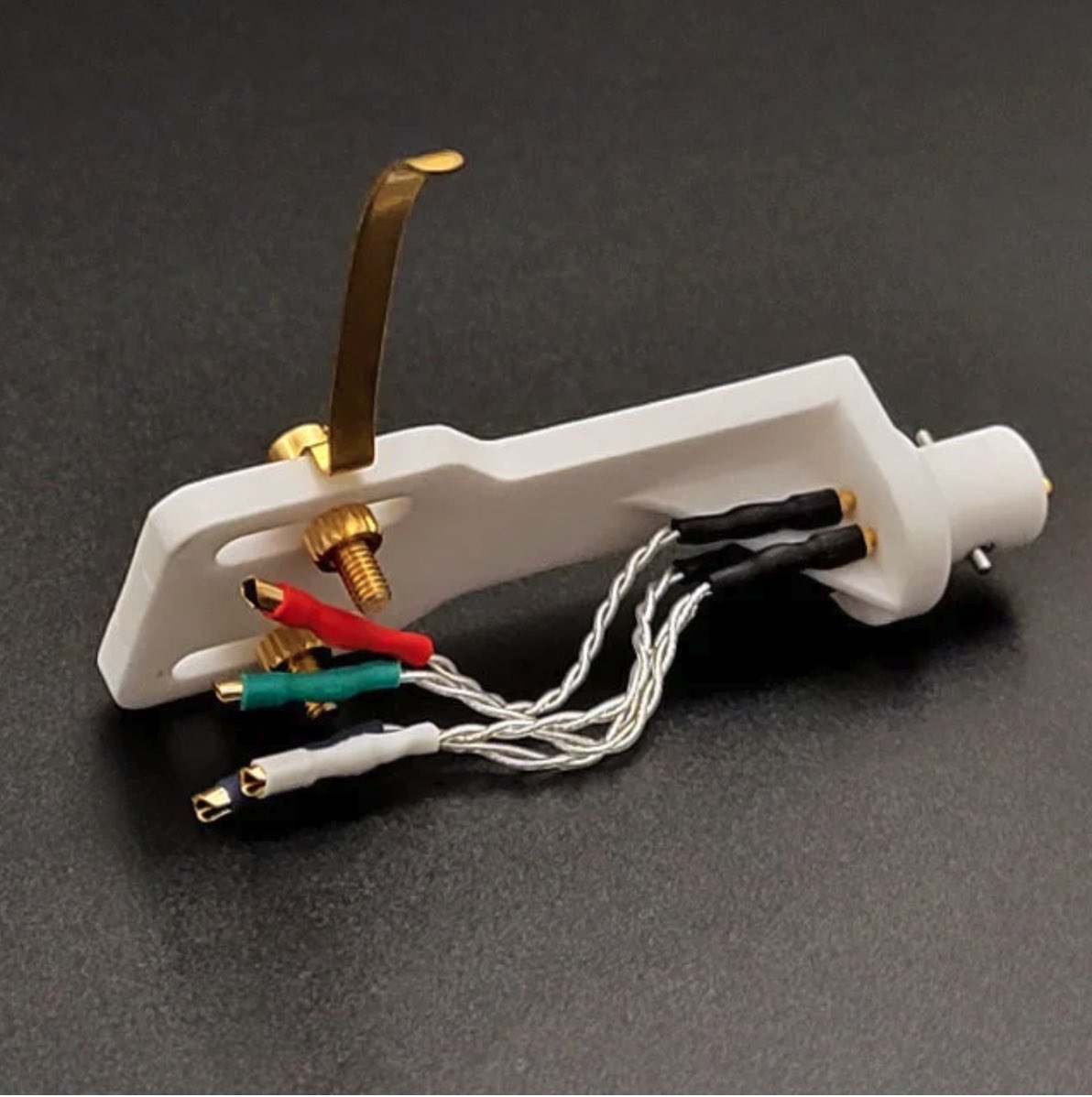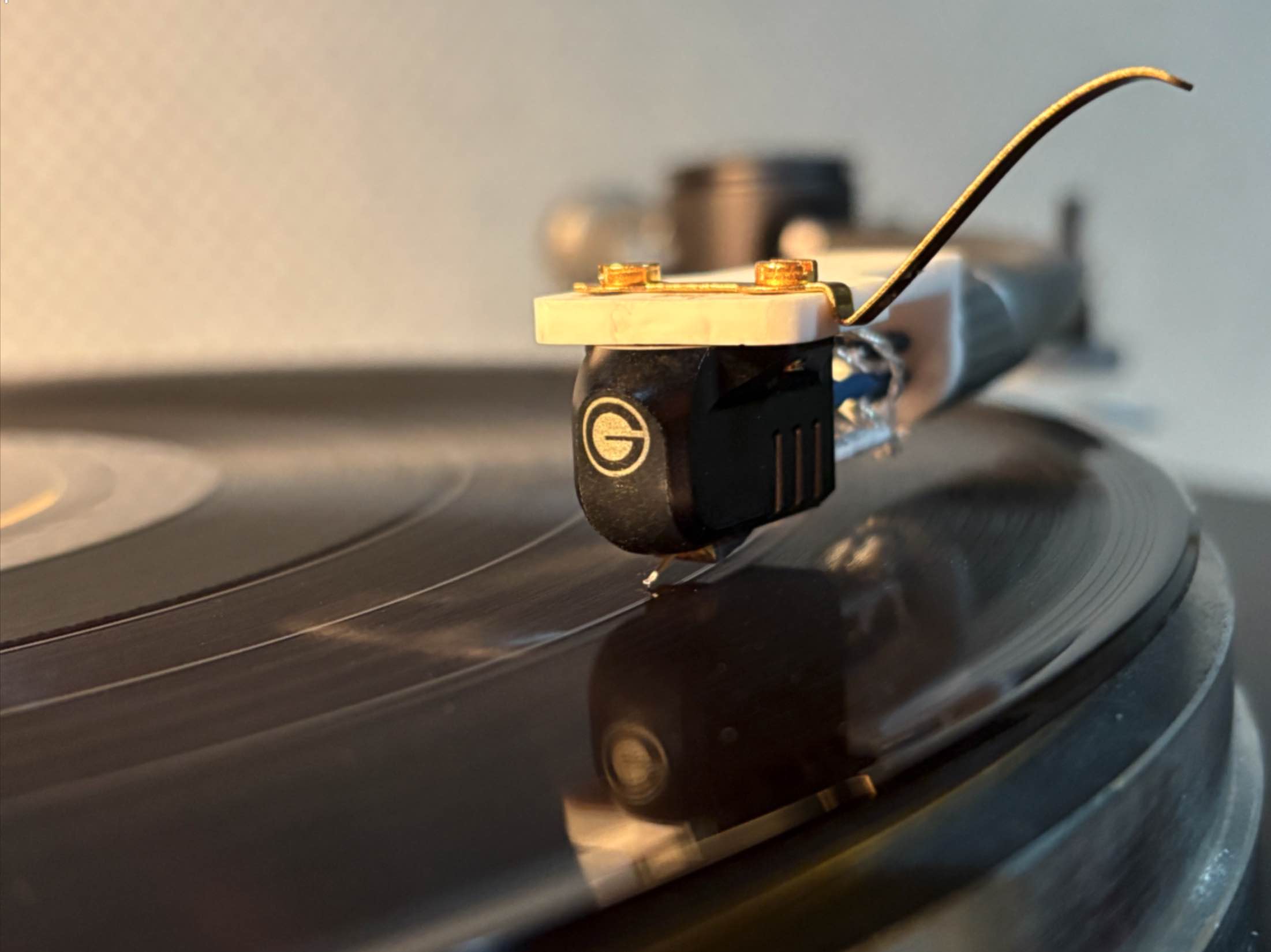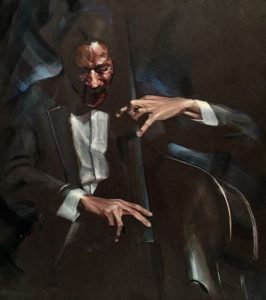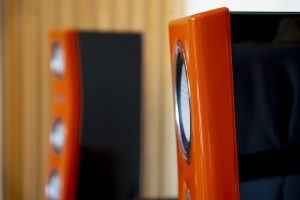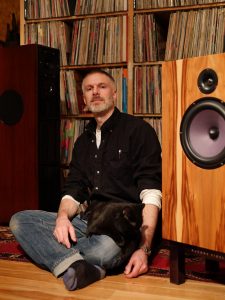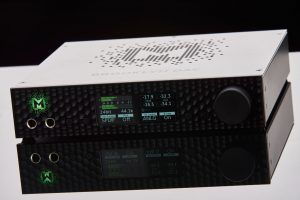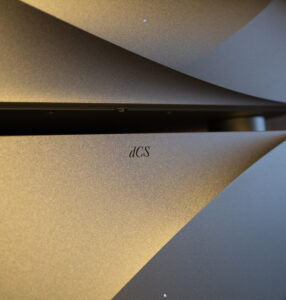Mike Moffat still photo sourced from Schiit Audio video
VALENCIA, CA—Mike Moffat, 73, is co-founder of the wildly successful Schiit Audio, which turned home audio on its ear with its affordable direct sales model. With manufacturing plants in California and Corpus Christi, TX, Schiit makes electronics ranging from $100 Digital to Analog Converters (DACs) and inexpensive headphone amplification to higher end DACs, preamps, amps, and a turntable. Their calling card is their championed use of multibit, versus the less expensive, reduced bit (or "delta sigma") DAC chips widely used in the industry.
Their flagship, the $2599 Yggdrasil Analog 2 DAC (just renamed Yggdrasil OG for "Original Gangster" or "Original," according to Darko.audio), created a stir and caught my attention for its astonishing performance at its price point.
When I sold my Lampizator Big 7 DAC this past year, Steve and Barry who were fellow administrators at the Facebook page, 'The Audiophile Group," encouraged me to replace it with the Schiit Yggy. Point blank, Steve said that it was the best DAC under $10,000, adding, "The Schiit Yggy is the best bang for the buck, updatable, and easy to get repaired if necessary."
As a former owner of the tube-based Lampizator Amber DAC 2, Lite 7 and Big 7 DACs, in 2021 I reviewed the Lumin T2 DAC/streamer and the Ayre QB-9 Twenty DAC. All were outstanding performers in their own right. To varying degrees, the Lampizators delivered bold, robust, wet, tube warmed analog imaging, while, true to their solid state construction, the T-2 and the QB-9 were drier, more linear, and sounded very similar to one another in A/B tests. Honestly, during their respective reviews, I was tempted to purchase both the Lumin and Ayre, but their lack of inputs (i.e., the QB-9 only supports USB, while the T2 only has Ethernet and USB) were ultimately deal killers. Moreover, having heard Moffat's DAC in the Angstrom 200 preamplifier years ago and, more recently, Schiit's modestly priced Modi DAC, after all the accolades, I was curious to hear their flagship model.
This prompted me to reach out to Schiit and find out for myself. I was not disappointed.
Specs and Impressions
Out of the box, the Yggdrasil is a modern minimalist beast. Weighing in at 25 lbs., the dimensions of its aluminum clad chassis are 16"W x 12"D x 3.875"H. Upfront, a button with tiny indicator lights selects the desired inputs, another to its left governs phase selection, while the rear sports, left to right: two pairs of RCA outputs, XLR (balanced) outputs; USB, optical (Toslink), coax, BNC, and an AES/EBU XLR inputs; and an IEC male power cord socket.
Below are the stated specs
- Inputs: AES/EBU XLR, RCA S/PDIF, BNC S/PDIF, Optical S/PDIF, USB
- Input Capability: up to 24/192 for all inputs
- Input Receiver, S/PDIF: AKM AK4113
- Input Receiver, USB: Unison USB™, based on Microchip PIC32 microprocessor
- Clock Management: Bitperfect clock management at all native sample rates via Adapticlock analysis and VCXO/VCO regeneration
- Digital Filter: proprietary Schiit time and frequency-domain optimized digital filter implemented on Analog Devices SHARC DSP processor
- D/A Conversion IC: Analog Devices AD5791BRUZ x 4 (2 per channel, hardware balanced configuration)
- Analog Stage: Fully discrete, DC coupled Class A FET buffers optimized for high current output and fully discrete, Class A FET summing stages for single-ended output
- Output: One pair XLR balanced and two pairs RCA single-ended
- Output Impedance: 75 ohms
- Frequency Response, Analog Stage: 20Hz-20Khz, +/-0.1dB, 0.5Hz-200KHz, -1dB
- Maximum Output: 4.0V RMS (balanced), 2.0V RMS (single-ended)
- THD:Less than 0.005%, 20Hz-20KHz, at full output
- IMD: <0.005%, CCIF, at full output
- SNR: > 119dB, referenced to 2V RMS
- Power Supply: two transformers (one for digital supplies, one for analog supplies) plus one input choke for discrete, dual mono, shunt-regulated analog +/-24V supply, plus 12 separate local regulated supplies for DACs and digital sections, including high-precision, low-noise LM723 regulation in critical areas.
- Upgradability: Fully modular architecture. Separate digital input board, USB input board, DSP engine board, and DAC/analog output boards.
- Power Consumption: 35W
- Size: 16 x 12" x 3.875"
- Weight: 25 lbs
You can view a battery of measurements of the Yggdrasil via the APx 555 Standard Test Suite HERE.
Photo courtesy of Coldwell Banker
Several weeks after the Schiit Yggdrasil arrived, I wrote the following observations:
At first play after it arrived, the Yggy sounded alright, but a little congested. However, after roughly 10 hours of playback time, splitting music via USB and TV audio via optical (Toslink), it's definitely starting to open up.
Listening to Michael Franks "Rainy Night in Tokyo" (Michael Franks. Passion Fruit. 44.1kHz FLAC) at a relatively low volume (i.e., 47 on the Pass Labs XP-12 connected to the DAC via Straight Wire Virtuoso balanced XLR cables with the Pass Labs X150.8 amp—Belle sleeping in upstairs), the acoustic guitar intro detailed, tapping on ride cymbals delicatly. Mix sounds great. Franks' vocals are airy, organic, very pleasing, and natural. You can really hear the mix, with its individual instruments easily distinguished; flute, keys, fretless bass, percussion all very clear, but not analytical sounding. Very pleasing presentation, as good as I've heard in this room—maybe better already.
Anthony Wilson's hollow bodied electric guitar on his song, "Fleur d'Ennui" (Anthony Wilson Trio. Savivity. DSD128)—clear, well-articulated with its warm and somewhat muted tone well captured; you can almost see him plucking the guitar with his pick (I kid you not!). Very pleasing detail. Hammond B-3 convincing. Drum snare, cymbals, toms in the backdrop (no doubt as mixed) good. Easy to get lost in the song.
Even though recorded in DSD, wouldn't know that it's being converted via ROON Labs to PCM.
In "All the Things You Are," Wilson's more frenetic noodling on lead guitar glistens delightfully, with the ride cymbal and drum kit keeping time clear, natural. Hammond B-3 solo accompanied by drums and comped by Wilson's guitar, followed by drum solo—very nice detailed, yet organic, natural presentation. Nothing etched sounding about it.
My initial impressions take place in my former 20' x 16' acoustically treated room (i.e., roughly 40 percent soft vs. 60 percent hard surfaces)—with its sofa, loveseat, shag rug, absorption panels at first reflection points, and bass traps. Subsequently, my wife, Belle, and I downsize to a smaller house with an unfinished basement where my transitional listening space is predominantly an 11' x 10' alcove lined with acoustic absorption and bass traps on the walls, a thick rug, speakers toed-in, with the listening couch seven feet away and acoustic curtains forming a semi-circle behind the couch to mitigate interaction with the concrete walls (we plan to finish the basement in the coming months). It still sounds incredibly impressive.
Since then, the Yggdrasil has really come into its own—and that's not just my opinion, but Belle's as well; although she's not onboard with more gear purchases, she gushes over the Yggy. Claiming that she feels her discerning ears are better than mine, she notes that its addition to my system has remarkably—not slightly—improved the overall sound (you can see a comprehensive listing of my components by clicking on my byline at the top of this article).
For example, while listening to Michael Franks' Time Together album over Straight Wire USBF (a filtered USB cable I like), the textures in his vocals are more clearly defined, not in an analytical, etched manner, but natural, unencumbered, and unobstructed. The breathiness, weight, and timbre of the trumpet, the metallic strikes and reverberations of the cymbals, the thwack on the snare, and the shimmery glowing notes of the vibraphone floating in the air are extremely well-articulated and palpable.
As with some reviewers, I notice that the bass is enhanced, and combined with the sharper imaging, HD movies like the action movie, Without Remorse on Netflix, become more visceral and aurally engaging.
Thomas Lang. ("MEINL DRUM FESTIVAL 2015. Thomas Lang Drum Solo." 1080p HD. YouTube)
However, the kicker for me is when Tim, a carpenter who for years played drums on the big stage of the megachurch, Willow Creek Community Church, drops by to give me an estimate on putting up drywall in our basement. Spying my gear, he insists on a listen. He's astounded by the layers of detail he hears and asks me to play an HD video of drummer extraordinaire Thomas Lang on YouTube (you can watch and listen to that HERE).
"That will be a real test," he announces.
The visceral slam of the kick bass and toms, cracking rim shots, assorted metallic clangs and hiss of cymbals, hi-hats, and percussion, like boxer Paulie Malignaggi's gloved fists, buffets our heads and torsos in dizzying flurries, rending us delirious in the aftermath.
"That's the first time I've heard so much detail in a performance of his in years," Tim says. "Now, I've lost a lot of hearing, but at this volume, I could hear everything," he marvels. "It's so clear and balanced... I really want to take your speakers home with me!"
It isn't just the speakers, I remind him; it's the whole chain, starting with the digital source, passing through the Yggdrasil DAC and Pass Lab amplification, before emerging from the Usher Mini Dancer 2 speakers via Straight Wire cabling.
"What's a DAC?"
It's a device that converts digital files to analog so we can hear them, I explain; found in devices from cell phones to TVs, a well made separate DAC can make a huge difference in sound quality.
Summarily Impressed
Now I know that auditory memory can be flawed, however, I do not recall the Big 7 (as incredible as it was), the Lumin T2 or the Ayre QB-9 Twenty delivering quite this same balance of the visceral combined with well-defined imaging. They all provide wonderful portals into the music, calling to mind country vistas viewed through a car's safety glass. With the Yggy, though, it is like opening the windows. Put another way, with the former, the music, like most American cheeses, is more pasteurized, while the Yggdrasil is European cheese—raw, richer, and more flavorful.
Bottom line, they are all excellent, and I could be happy with any of them. However, with its input versatility, the combination of vivid detail, tactile qualities and punch that it adds to my system, in my succession of rooms, the Yggdrasil Analog 2 is the one I prefer.
Mike Moffat (still shot from Schiit Audio video)
The Interview
Juan Ayllon: Can you give us a thumbnail sketch taking us through your personal and professional journey in audio?
Mike Moffat: I started doing audio, God, way back in high school. I was already working on and modifying amplifiers and kept that up through college, and sold a few of them—tube amplifiers, mostly Dynacos. I had the old, really ugly Quad 57 speakers... and realized really quick that tube amps were the best for those. I started out rolling tube stuff and, finally, when I was about the late 20s, I started a company building a tube preamp and, eventually, a tube power amp, and it was kind of the first. It was a maverick design; it didn't have 12AX7s. Everybody else had 12AX7s and feedback, and it was a no-feedback design—no feedback, all passive equalization—and it used 6DJ8 tubes, which was what Hewlett Packard and Tektronix would put in oscilloscopes. It was just a technological better tube. 12AX7s were designed for portable record players, you know—you get a lot of gain in a small package kind of thing.
Theta Digital
MM: And then what happened was the company didn't go broke, but it wasn't making a lot of money, so I slowly wound it down and not believing how bad digital was, ended up doing Theta Digital. And that was a "big deal" company. That company did real well, and we came out with basically the first (external) D to A converter. At the time—early 80s—everyone had CD players and a digital out, but there was nothing to hook the digital out to, so I just built something to hook the digital out to, on and on and on. Did that for quite a while. I kept that up for some time and finally sold it to my partner while I kinda figured I'd gotten to the end of all my bright ideas. (Theta) was going in a home theater direction and I wasn't a home theater kind of person.
A Hollywood Hookup
MM: I ended up working for Hollywood people on a film duplication system that was "go-fast." Now, there was a ton of money, but it wasn't any fun.
Schiit Happens
MM: So then some years after that, my old buddy, Jason Stoddard, that I knew from my Theta Digital days—he worked for Sumo and we were in the same industrial center—we started Schiit back then. And we didn't know we were going to call it Schiit, but we started it, and we figured that we'd build stuff for the headphone space, 'cause we figured the economy was getting harder and harder to make a living in compared to what it had been, so it's a lot harder to support a big audio system 'cause you need a house, but more and more people were using headphones 'cause they could do it in their bedroom without bothering people, and they were getting real popular, so then we started building some amps and a DAC, and the DAC was upgradable and that kind of stuff. And then I figured out what the world needs is a good hundred dollar DAC, so we made a $100 DAC, and my partner made a good hundred dollar amp, and that's our bread and butter to this day.
And you know it's not like it's the world's greatest, but it's good enough for an awful lot of people. I can't believe the way they fly off the shelves. I mean, they're in the high hundreds per month! Believe it or not, they sell—both the amp and the DAC.
Enter the Yggdrasil
MM: And then I decided that what we need to do is to build something maybe higher end, and that's the Yggdrasil, which I think you've heard. That's our highest end thing; that's twenty-four hundred dollars and that's as high end as I'm ever going to go 'cause I'm not going to go for the machined-out solid aluminum, you know, chips all over the floor kind of design when you start out with a 20lb. block of aluminum and hollow it all out. We're not selling art as much as just selling the best thing we can do for the buck. And, I mean, I could do better on the Yggy using real fancy wires—silver stuff, but it would take a $2400 DAC and make it a $5000 DAC. And then we could sell through dealers (we've been selling direct 'cause that cuts the price in half). And this is all about really trying to keep our hobby alive. And a tighter money market—not money market like in banks—you know, it's just harder to make money these days. So, that's what the deal's about in a nutshell.
Bits are Bits—or Are They?
What is it about multi-bit DACs that sound more like sitting in a live music hall than delta sigma DACs to you?
MM: Multi-bit DACs rely less on mathematical algorithms to reproduce the music. To do a 1-bit DAC, you have to use complex math that reduces the amount of information, then attempts to reconstruct it. And it's true that there's reconstruction in multi-bit DACs as well, but there's far less of it.
Basically the DACs that are in your phone that you carry around with you, they're all 1-bit or reduced bit, and all the computers out the analog jack—they're all reduced bit, one-bit. And our hundred dollar DAC—we couldn't do that in multi-bit. The least expensive multi-bit DAC we have is 280 bucks. That's about as cheap as I can get, because they're just inherently more—the DAC would have to be—I guess the term would be "handmade." They rely less on a simple computer and more on hand-trimming resistors for each bit value, so the labor involved in making a multi-bit DAC is quite a bit more than the labor involved in making a one-bit DAC.
All of our multi-bit DACs use a digital filter that has a certain algorithm that I think sounds real good, okay? It's the one I like, and it's a time domain and frequency domain optimized, and it's the only one that keeps all the original samples. All of their digital filters—and one bit DACs have them too—although their bit width and so on is different, and so on—throw away all the original samples—and the Schiit filter, as the Theta filter before it, keeps all the original samples. So, we put three or seven new samples between each original sample, and that's how we do it so all the original information is there.
A 'Hand-Rolled' 1Bit DAC in the Works
MM: But one project that we have going on right now that we're going to get to as soon as we finish with the CD transport (you can read about their Urd CD transport HERE)... is a model of a one-bit DAC with similar kinds of filters.
And we don't know what we're doing with one-bit! My favorite thing to do is do something I don't have the foggiest idea of how to do it. And I've never done a one-bit, sort of hand rolled digital filtered DAC.
We're just kind of getting to the point now where it's just starting to pass music without it being a disaster. And this is nothing for an imminent product, but something so that we can say that we have a hand rolled, reduced bit DAC. And I don't know where it's gonna go, and how good it's going to sound. When we get there, I suspect it's going to be better.
You know, it's not going to be cheap, either. It's not going to be a hundred dollar DAC. But it's going to be our attempt to see what is the most we can get out of a one-bit, and then how does it compare, cost-wise, to a multi-bit, because basically it needs a lot more computer power to do a one-bit than it does to to a multi-bit. So, we don't know what we have yet, but that's the fun thing we're screwing around with now.
Got the Itch for Pitch Control and 432?
MM: Also, we're doing a couple side projects. Like I've got a little thing that comes out of the musical universe, and if you've got a turntable—are you an analog-phile? Are you an analog kind of guy?
Minimally, but I do have a turntable—a VPI Prime Scout, and I have a Pass Labs XP-17 phonostage sitting on my media stand.
MM: Got it. The reason I bring it up is that with analog, the only way to lower the pitch or to increase the pitch is to increase the speed or slow it down, and we've got a little gadget that changes the pitch without changing the speed. The tempo stays the same. And that's very interesting because there's a certain point of the key—most musicians use a key of A 440—and then there's a key you hear about sometimes where A equals to 432, which is much closer to C equals 256, which is sort of the natural center where it's a certain pitch where all of the harmonics perfectly align up, and it has a different kind of sound when C equals 256. We've got that. Don't know if we're going to sell it yet, but it's an interesting thing to play around with.
So you know, this is the kind of stuff that I won't get bored with. We've got all the various price points on DACs covered: we have a hundred dollar DAC, a $180 DAC, $270 DAC—that's the multi-bit DAC, then we have an $1,100 or $1,200 DAC (that's the Gugnir), and then we have the $2400 DAC.
A Garage Sale for Schiit!
MM: And then we have garage sale versions of DACs. We do a lot of upgrades, so we end up with parts. And my partner calls them "garage sale" versions, I call them "floor sweep" versions that we do when we have a lot of used boards when we do upgrades. And we sell those as stuff we build out of recycled parts.
Kind of like B-stock?
MM: No, B stock is something that's dinged; it's something that somebody dropped on the table wrong. Or B stock is something that's been tried and returned and doesn't look perfect. That's what our B stock is.
For example, we had a USB upgrade a while ago to our Unison USB, so we had a zillion old USB boards, 'cause that was a very popular upgrade. With all those old USB boards, we can put those in, and the analog versions before that, and just save a lot of money on the parts cost on a DAC that's one model behind. And that's the floor-sweeper or the garage sale version.
A Master of Your Frequency & Time Domain
I first read about the differentiation between frequency domain and time domain performance in a user's manual while reviewing the Ayre QB-9 Twenty DAC and was reminded of that in a recent interview of yours. How would you explain the differences to someone who's not well versed in that?
MM: We make these little analog Loki equalizers, and they have a high treble band, a medium treble band, a midrange and a mid-bass band, and they have all these different bands, and when you tweak those up or down, you're messing with the frequency domain; you're making them brighter, you're making them duller, you're making them bassier, you're making them mid-rangier—and that's the frequency domain.
What the time domain is how long the sound takes to get to your ear which, in the real world, determines the image. You know, like the rimshots on the drum, and if the time domain is accurate, then the drum will come off as the right size in the right place. It won't come off as being as big as the whole recording or a little tiny postage thing. It's how everything pinpoints—its location, but not only the location, but its size.
Measurements and Mosquito Farts
There was an Audio Science Review article on the Yggie—which I'm amazed by—where they gave it a negative rating regarding the power supply noise and a few other measurements, while they touted the performance of a cheap Topping DAC. How would you address that?
MM: Well, he's entitled to his opinion. If you look at his graphs, he has a tendency to expand the graphs out if he wants to make something look noisier; if you look at the units on the graph of the other units versus this one. I don't know if he has any financial interest anywhere. You know, he could be someone who really believes it, okay? It's like he argues that he's Science. How can I say this? He has a following. I don't know how big it is. I don't know what he does, but he doesn't build DACs, he measures DACs. He doesn't have a background of creating components. He has a background of measuring them, and he believes that all performance parameters and everything that can be expressed about a DAC are expressed in its measurements. And he clearly states that on his website.
Now, I'm the opposite kind of guy. I believe that the measurements should be maintained within certain standards, but I think there's a lot of measurements that boil down to mosquito farts in the context of jet engines, okay?
I'm not contemptuous of science, I'm contemptuous of a constant science, and the science that's been used on measuring DACs is pretty much the same since DACs came out, (only) the instruments have gotten better at exposing flea farts.
I know what I like the sound of; I can't tell you what you like the sound of. I mean, a lot of people are happy with their hundred dollar DACs, and they're really a whole lot better than the computer generated audio or the cheap system audio.
And all I would note is that the scientists are like the people telling Copernicus that, no, the sun doesn't go around the earth. That was the old scientific view because it used old standards and tended to be inflexible. Copernicus was the guy who was the engineer, who built the thing and figured out new systems and new telescopes and how to figure the things out. And you know, what you've got today is you've got your scientists who tend to be conservative, but it's like the sound—if you like the way my stuff sounds—and it measures flat down to a flea fart level, what do you care? That's just my point of view.
(Note: Schiit Audio co-founder, Jason Stoddard, discusses various analyzing equipment employed to vigorously measure their products HERE)
On MQA, DSD and Tapping Your Toes
There's been a great deal of hoopla surrounding DSD64, 128, and more, yet your Yggdrasil doesn't natively decode that format; instead, it allegedly down-samples and converts to PCM via player software to render the music. Initially, that was a stumbling block to me—until a computer engineer told me that DSD is just another way of storing music—no better or worse than other lossless formats. Since then, I purchased the Yggie and have enjoyed listening to my various DSD64 and 128 files via Roon and never looked back. What's your take on DSD or MQA?
MM: Okay, MQA, I've never liked, and I think it's finally died recently. And the reason I never liked it is because it was an effort to take over the whole industry. It was an effort to control the record process with a proprietary bend that required the payment of royalties, and then the converse of that on the playback to get more royalties to one person. And I don't think any one person is perfect. I know, personally, that starts right here; I made my share of things that never went to production 'cause they absolutely sucked. But this was just an effort to try to capitalize on a name to collect royalties on all aspects of everything. That's why I was opposed to MQA.
Now DSD is different. It's not that I'm any more opposed to it than I am to normal PCM audio. The catalogue of music that's available for DSD64, 128—I think there may have been a few 256's (I could be wrong)—is so infinitesimally small that I then have to add a whole new decode board and a whole new level of engineering that then essentially increases the cost of the DAC that the user pays to maybe allow maybe another one percent of music to be listened to. So, that's my value judgment on that.
You're not buying a Schiit piece of gear because it has "Acu-jack," "Auto-suck," and you know whatever; you're buying a Schiit piece of gear because you want to listen to music and tap your feet.
So, then it makes that everybody that doesn't have one percent of DSD recordings on the market pay a lot more money for the DAC that has the same performance. So that's why I don't do it. Believe me, if DSD were widely available, if you could get everything from 1903 performance on cylinders of Caruso to really esoteric jazz, to modern rock which became pop, to Americana or whatever, if there were a huge catalog on it, I would go there. It's not like DSD128 is inferior. I don't think it's any better than the best one bit, but that's only my opinion. It's just that there's no music there.
Some Enchanted (and Inconvenient) Analog
You previously have stated that you really love analog recording media, such as vinyl, immensely—largely because it is continuous play and doesn't have any "holes" or gaps in between samples, but find it grossly inconvenient. Can you tell us more about that?
MM: It's still grossly inconvenient. If you're going to play vinyl, you pull it out, you clean it up, you take your record brush, you take all the dust off of it, you put the arm on it, you play it, and then you get about 15 minutes, maybe 20 minutes of music. So, if you want to listen to something that's long, you know like Pink Floyd's Dark Side of the Moon, and look at it like a symphony or listen to an opera or listen to Beethoven's Ninth, or listen to something like the Allman Brothers and jamming forever, you have to get up in the middle of it and pick up the needle. That's inconvenient.
Now, there's just something—I don't know what it is; if I knew what it was, I'd be making a ton of money. Digital is much better than it was. It's really good. But there's something almost magical with music that's been recorded in analog that's just continuous over time. It's not sampled. There's no construction filters. You get no analog stages. And I'm a minimalist. The less shit you have, the better it sounds.
The Schiit Audio Sol Turntable (still shot from Schiit Audio video)
A Turntable with Sol
So is your recent foray into making a Schiit turntable, the SOL, a concession to the re-surging popularity of vinyl or a point of personal interest to you?
MM: Personal point of interest. You know, right now, we're sort of wondering what we're doing with it because it's so difficult to make. You get companies that are used to making things like that. The SOL is an amazing turntable for the money. It really is, but it's just very hard to make. Very, very hard to make and we're looking at it wondering why we're doing it, but for now it's fun.
A Tubular Kind of Guy
Back in the 1990s, you had also mentioned that you really love tubes, use them at home, but generally don't manufacture gear that uses them because it results in more returns. Is that still the case? Do you still listen to tubes at home, or have you become a bigger fan of solid state since then?
MM: I'm more of a fan of solid state since then, but still, with either one at its best, I still prefer the tubes. I don't know how I can say this, (but) tubes cater to people who are fussy. And I'm fussy, you know, I'm one of those people.
Now, I build my own gear, but most people out there who are audiophiles and fussy, one thing that happened is dealers have disappeared in a direction of direct sales. Now what's the advantage of direct sales? The price is half! That's a big deal. That's a very big deal. But the one thing that dealers used to do is they catered to the fussy people that may not have had all the skills to set their turntable up perfectly, for example, because to set up a turntable perfectly is a pain in the ass! And it's a lot of work and requires some expertise. And dealers used to provide some expertise and hand-holding, but if you're going to be fussy and can't afford to teach yourself to an engineering level, you're going to need a knowledge base. And you can read all you want on the internet or watch all you want on YouTube, but that's just not the same as hands on. And to get the very most out of it, if you're a hands on guy and you like tubes, you're gonna be hands on, there's no way to avoid it. It's that kind of thing. You know, if you like fast cars, okay, well are you going to do your own valve job? You know, because it can get to that.
And nowadays what people want is just go ahead, buy it, plug and play, and it just goes. So, how to build that is a whole skillset, and how to design that is a whole new skill set that didn't exist 40 years ago. But it's fun, and it sounds good.
Adapting for a Chippy Supply Chain
Across the industry, there's been a problem in the supply chain in terms of DAC chips and other electronic parts. How has that impacted Schiit Audio?
MM: Well, we used AKM DACs for our products and we had to design out and put the ESS DACs in 'cause AKM specifically had a fire that took out all their DACs only. They make a number of sensors and things for the automotive market, and they're still making those. That factory didn't all burn, but their DACs are just gone. And they say they're going to be back, but we haven't seen them yet. So we had to redesign a line of our less expensive DACs to accommodate that and, true, they sound different; and you know the more I listen to both, I think that some people like one, and I think that some people might like the other, whether it's the ESS or the AKM, but I don't think one is a clear winner over the other. In fact, if I'd known then what I know now, I probably would have earlier designed them to work with either chip just in case. (Note: Mike informs me later via email that the multi chips used in the Bitfrosts, Gungnirs, and Yggy families are: AD5547, DAC8812, TI11011, AD5791, and AD5781).
What it means for us is we have to stock our parts deeper. That's what it means for us. And it's taken a little readjusting, but so far it hasn't really cost us dearly when we've been slow on products. We've been slow on Lokis, the equalizers—we've now finally got caught up. And when we've been slow on the turntables, it's because we had our head up our ass. We screwed up; it certainly wasn't the supply chain.
In our case, we have maybe 25 parts that are a huge part of all our products and we're just stocking up.
The Yggie Power Supplies the Love
While on the subject, tell us about what makes your latest generation Yggdrasil—which I own and love dearly—so unique and special?
MM: I think it's the power supply. The power supply has both a series regulator and a shunt regulator, and it's terribly efficient. It wastes a lot of power. It's 99 percent of the best I can do without resorting to silver or exotic parts like Vishay resistors, but resorting to the best metal film caps, the best caps that are commonly available. Most people when they're building DACs don't use film caps at all. We do. They sound better in many analog positions. We don't have to use them in all our analog positions; we just have to use them in the ones that are in the sound path. So we pay attention to little stuff like that. We pay attention to the 99 percent of stuff and don't bother with the last one percent.
You know I have been in this thing so long that no matter what, there's people that are going to hate what you do, there's people that say this is the best DAC ever, there's going to be people who say, 'hey, this DAC doesn't measure well,' and no matter what you do, no matter how good or bad it is, there's going to be a variety of opinion. Our stuff is built for the person who likes to listen—and measure—and make his own informed decisions. Which is increasingly tough. That's the one very bad thing about dealer-less marketing. It makes it very tough for the average guy to make his own informed decision by trying a lot of gear.
And so, it's my best shot at what I can do today, but I've been doing this a long time.
Moffat Keeps on Truckin'
Any last thoughts you'd like to share with our readers?
MM: Thanks. I have a job where I'm not out there on a freeway, driving to a job I fucking hate, and going back to it, to retire and then die five years later from bad daytime TV or something. I absolutely love what I'm doing. And I couldn't do it if there weren't people out there who'd buy my stuff. And I think it's pretty good for what it is and it's really good for us, and it represents the best I can do at various price points.
And if you don't like it or you think it measures bad, I can't get hurt by it. I just keep going. You know, I just don't take my stuff that personally. I do it because I'm having a good time.
And there are people out there, and I'm not saying it's just my critics, but there's people out there that just don't have fun with anything they do. Anything they get into, they just don't like. And what they don't like, they make a big stink about. But, hey, I'm having fun. (Mike lets out a hearty laugh)
And Speaking of Fun
MM: But I've got another question because, obviously, you're a fight fan. I saw a fight that I can't remember the name of the fighter, but it was probably one of the greatest fights, if not the greatest, that I've ever seen. I can't remember the name of the guy. It was one where they both had each other knocked down, momentum going back and forth—all the rounds, all the way through—and then finally, one guy won, big surprise. I can't remember his name, and he died in a motorcycle accident.
Oh, yes! That was Diego Corrales. He was fighting Jose Luis Castillo. Towards the end, Corrales was spitting out his mouthpiece and lost points for that, but all of a sudden as Castillo goes to finish him, he gets caught with a crunching shot and several more, and then it's over. The referee saved Castillo's life that night.
MM: I've got to say, that's probably the best fight I've ever seen.
Yggdrasil Analog 2 DAC
Retail $2599
Schiit Audio




